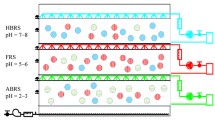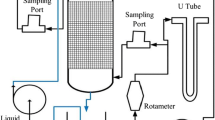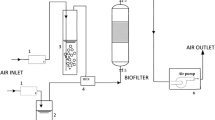Abstract.
The trickle-bed air biofilter (TBAB) performance for treating acrylonitrile (AN) and styrene (SR) mixtures was evaluated under different influent carbon loadings. In the pseudo steady state conditions, the elimination capacities of AN and SR increased but the removal efficiencies decreased with increased influent carbon loading. The removal efficiencies of AN were higher than those of SR, indicating that AN is a preferred substrate in the ANSR waste gas. More than 80% removal efficiencies were achieved with influent carbon loadings of AN and SR below 28 and 22 g/m3/h, respectively. The TBAB appears to be efficient for controlling ANSR emission with low to medium carbon loadings, and the effectiveness could be maintained over 175 days of laboratory operation. The elimination capacities of AN and SR for a pure volatile organic compound (VOC) feed were higher than those for a mixed VOC feed and the differences increased with increased influent VOC loading.
Similar content being viewed by others
Author information
Authors and Affiliations
Additional information
Electronic Publication
Rights and permissions
About this article
Cite this article
Lu, .C., Lin, .MR. & Wey, .I. Removal of acrylonitrile and styrene mixtures from waste gases by a trickle-bed air biofilter. Bioprocess Biosyst Eng 25, 61–67 (2002). https://doi.org/10.1007/s004490100270
Received:
Accepted:
Issue Date:
DOI: https://doi.org/10.1007/s004490100270




